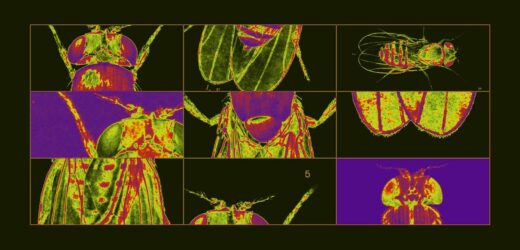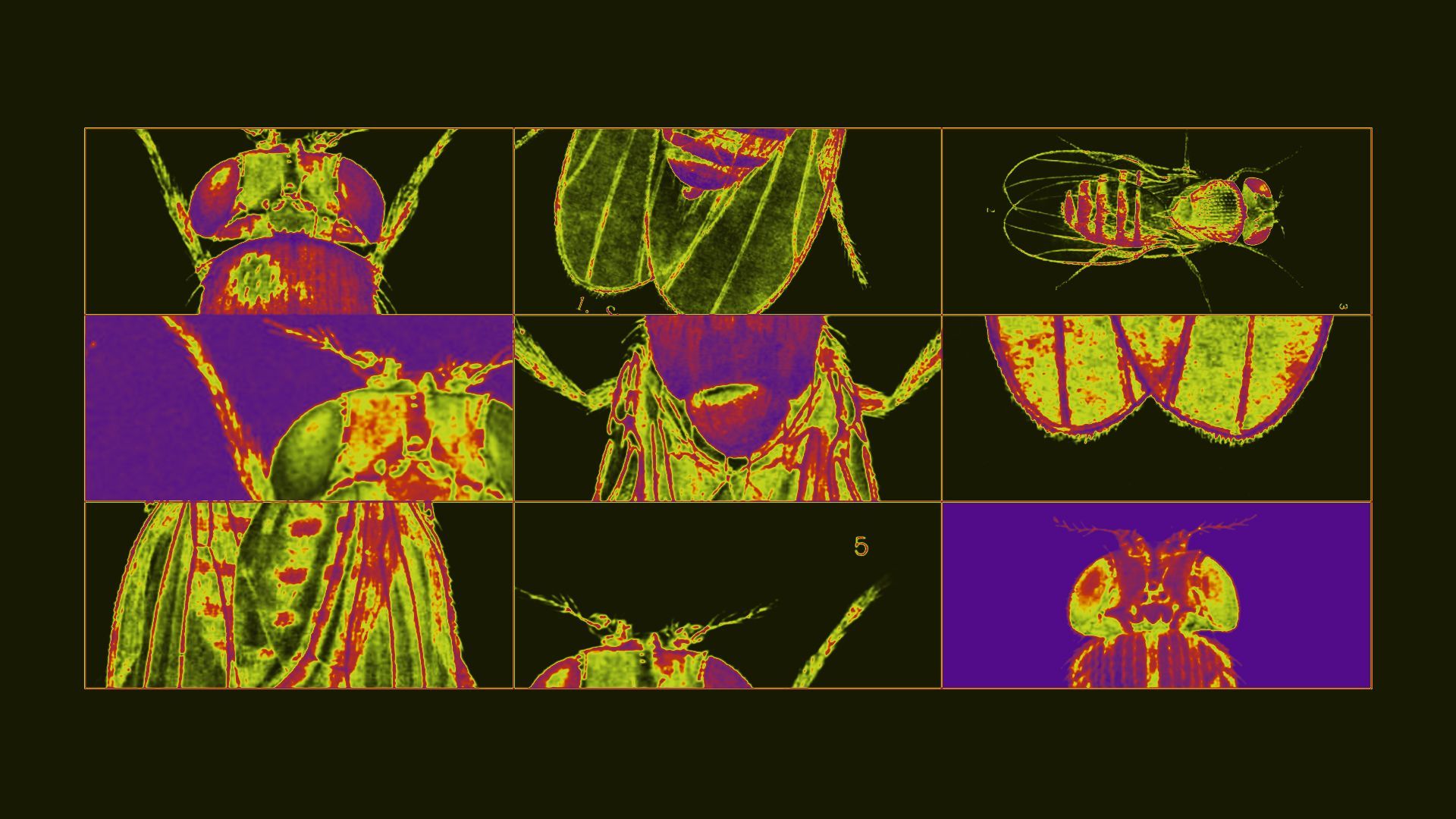Photo Illustration: Natalie Peeples/Axios. Photos: Biodiversity Heritage Library
A new map of a maggot's brain offers details about the wiring of neurons involved in learning — and could offer insights for powering AI in the same task.
Why it matters: The fly brain diagram will allow scientists to probe how the brain's hardware shapes behavior. It could also reveal circuits that evolved over hundreds of millions of years — and suggest ways to process information with less energy, a problem plaguing AI.
- "Both natural and artificial intelligence is learned so understanding learning fundamentally is agnostic" to whether it is neurons or silicon, says Joshua Vogelstein, an assistant professor of biomedical engineering at Johns Hopkins University.
- "What is it to say it is learning? And what are the mechanisms of learning? Those principles will be helpful to better understand what is happening in ourselves and to build better tools to serve us."
What's new: A team of researchers, including Vogelstein, today published a complete wiring diagram — or connectome — of a fruit fly larva's brain. It's the largest and most complex complete nervous system mapped to date, and the culmination of more than a decade of work.
- The scientists created images of a six-hour-old female Drosophila melanogaster's brain by using electron microscopy to study 4,841 brain slices, each about 50 nanometers thick, and then reconstructed the connections between neurons.
What they found: There are 3,016 neurons and 548,000 synapses, or connections, in the fruit fly larva's brain, according to the study published in the journal Science.
- The scientists found 93 distinct types of neurons and determined their connections, hubs in the neuron networks and different types of circuits.
- They found many of the dopaminergic neurons involved in learning had recurrent connections, that send signals forward and backward with a partner.
- Those pathways of neurons in the fly larva brain "resembled prominent characteristics of state-of-the-art machine learning networks."
Yes, but: The researchers mapped the brain of one fruit fly larva.
- "It is just one maggot. We could have gotten a weird one," Vogelstein says. "It's unlikely because they are clones but it is certainly possible and if so, we might learn a lot about one and a little in general."
- Like humans, fruit flies learn, make decisions and navigate their world. Their larvae have complex behaviors like moving toward food but unlike adults, they don't yet fly and have only limited vision, says Stanley Heinze of Lund University in Sweden, who studies insect neuroscience and was not involved in the new research. "But the overall principles are the same in the end, and the insights provide the roadmap or mental scaffold for how to interpret more complex connectomes."
- A separate team is trying to map the brain of an adult fruit fly.
- The diagram is also missing information: the dynamics of how a connectome changes from one moment to the next; whether a neuron is moving information along in the network or inhibiting it; and the types of chemical signals, called neurotransmitters and neuromodulators, at work.
Scientists have debated how much can be gleaned about an animal's behavior from a connectome.
- It is "unlikely to be sufficient" for understanding learning and intelligence because it is missing "lots of details of how information is flowing but it is likely to be required to understand the mechanism," says Vogelstein, who is in the camp that the architecture of the brain is important for understanding behavior.
- The connectome is a reference for people to test hypotheses about behavior and development, and the tools they developed to create it can be applied to other connectomes, he says.
- Researchers are trying to map the human brain as well.
What to watch: The brain architecture of insects could hold clues about how to process information with less energy, a potential solution to a problem for today's AI and computation.
- Insects "solve these problems in an efficient way with much fewer neurons" than humans and other animals, Heinze says.
- He is working with a team at Lund that is trying to build nanowire devices that are essentially artificial neurons. The geometry of the circuit is a challenge though and brain diagrams might help give new ideas for solving these problems, he says.
- The paper "gives us the hardware … that resulted from 500 million years of evolution and was made very efficient."
Source: Read Full Article



